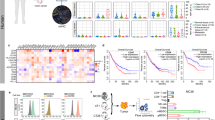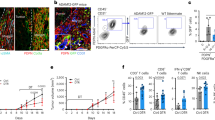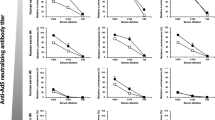Abstract
Granulocyte-macrophage colony-stimulating factor (GM-CSF) acts as a double-edged sword in cancer by enhancing both anti- and pro-tumorigenic immune cells. In this study, two oncolytic adenoviruses were engineered to modulate GM-CSF expression using different strategies: one with the CMV promoter (oAd-CMV-GM-CSF) and the other using the endogenous viral E3 promoter (oAd-GM-CSF). The impacts of these modifications on transgene expression, cytotoxicity, viral replication, and apoptosis were assessed both in vitro and in vivo. The results demonstrated that oAd-CMV-GM-CSF produced significantly lower GM-CSF levels than oAd-GM-CSF, interestingly oAd-CMV-GM-CSF exhibited increased cytotoxicity and apoptosis compared to oAd-GM-CSF and control groups. The further study showed oAd-CMV-GM-CSF induced profound autophagy through the activation of the Janus kinase 2/Signal Transducer and Activator of Transcription 2 (JAK2/STAT2) signaling pathway. The use of autophagy and JAK-2 inhibitors, Chloroquine (CQ) and AG-490, respectively, significantly mitigated the apoptosis induced by oAd-CMV-GM-CSF. In addition, oAd-CMV-GM-CSF presented a faster viral replication and production of more active progeny virus than oAd-GM-CSF, which could be inhibited by CQ. oAd-CMV-GM-CSF augments propagation of the progeny viruses and induces immunogenic cell death(ICD) in A549 and PANC-1 cells. In vivo oAd-CMV-GM-CSF had stronger anti-tumor effect than oAd-GM-CSF in immunodeficient model and immune-competent model. Our findings indicate that oAd-CMV-GM-CSF induces more profound autophagy and promoting viral replication to enhance the anti-tumor efficacy.
This is a preview of subscription content, access via your institution
Access options
Subscribe to this journal
Receive 12 print issues and online access
$259.00 per year
only $21.58 per issue
Buy this article
- Purchase on SpringerLink
- Instant access to full article PDF
Prices may be subject to local taxes which are calculated during checkout








Similar content being viewed by others
Data availability
All relevant data supporting the findings of this study are included within the article or are available from the corresponding authors upon reasonable request. Further inquiries can be directed to the corresponding author, Fei Li, via email.
References
Tian Y, Xie D, Yang L. Engineering strategies to enhance oncolytic viruses in cancer immunotherapy. Signal Transduct Target Ther. 2022;7:117.
Lin D, Shen Y, Liang T. Oncolytic virotherapy: basic principles, recent advances and future directions. Signal Transduct Target Ther. 2023;8:156.
Shalhout SZ, Miller DM, Emerick KS, Kaufman HL. Therapy with oncolytic viruses: progress and challenges. Nat Rev Clin Oncol. 2023;20:160–77.
Twumasi-Boateng K, Pettigrew JL, Kwok YYE, Bell JC, Nelson BH. Oncolytic viruses as engineering platforms for combination immunotherapy. Nat Rev Cancer. 2018;18:419–32.
Mamola JA, Chen CY, Currier MA, Cassady K, Lee DA, Cripe TP. Opportunities and challenges of combining adoptive cellular therapy with oncolytic virotherapy. Mol Ther Oncol. 2023;29:118–24.
Oronsky B, Gastman B, Conley AP, Reid C, Caroen S, Reid T. Oncolytic adenoviruses: the cold war against cancer finally turns hot. Cancers. 2022;14:4701.
Russell SJ, Bell JC, Engeland CE, McFadden G. Advances in oncolytic virotherapy. Commun Med. 2022;2:33.
Gryciuk A, Rogalska M, Baran J, Kuryk L, Staniszewska M. Oncolytic adenoviruses armed with co-stimulatory molecules for cancer treatment. Cancers. 2023;15:1947.
Zhao Y, Liu Z, Li L, Wu J, Zhang H, Zhang H, et al. Oncolytic adenovirus: prospects for cancer immunotherapy. Front Microbiol. 2021;12:707290.
Chesney JA, Ribas A, Long GV, Kirkwood JM, Dummer R, Puzanov I, et al. Randomized, double-blind, placebo-controlled, global phase III trial of talimogene laherparepvec combined with pembrolizumab for advanced melanoma. J Clin Oncol. 2023;41:528–40.
Khushalani NI, Harrington KJ, Melcher A, Bommareddy PK, Zamarin D. Breaking the barriers in cancer care: the next generation of herpes simplex virus-based oncolytic immunotherapies for cancer treatment. Mol Ther Oncol. 2023;31:100729.
de Graaf JF, de Vor L, Fouchier RAM, van den Hoogen BG. Armed oncolytic viruses: a kick-start for anti-tumor immunity. Cytokine growth factor Rev. 2018;41:28–39.
Zhang B, Huang J, Tang J, Hu S, Luo S, Luo Z, et al. Intratumoral OH2, an oncolytic herpes simplex virus 2, in patients with advanced solid tumors: a multicenter, phase I/II clinical trial. J Immunother Cancer. 2021;9:e002224.
Friedman GK, Johnston JM, Bag AK, Bernstock JD, Li R, Aban I, et al. Oncolytic HSV-1 G207 immunovirotherapy for pediatric high-grade gliomas. N Engl J Med. 2021;384:1613–22.
Park BH, Hwang T, Liu TC, Sze DY, Kim JS, Kwon HC, et al. Use of a targeted oncolytic poxvirus, JX-594, in patients with refractory primary or metastatic liver cancer: a phase I trial. Lancet Oncol. 2008;9:533–42.
Toulmonde M, Cousin S, Kind M, Guegan JP, Bessede A, Le Loarer F, et al. Randomized phase 2 trial of intravenous oncolytic virus JX-594 combined with low-dose cyclophosphamide in patients with advanced soft-tissue sarcoma. J Hematol Oncol. 2022;15:149.
Rangsitratkul C, Lawson C, Bernier-Godon F, Niavarani SR, Boudaud M, Rouleau S, et al. Intravesical immunotherapy with a GM-CSF armed oncolytic vesicular stomatitis virus improves outcome in bladder cancer. Mol Ther Oncol. 2022;24:507–21.
Hadaschik BA, Zhang K, So AI, Fazli L, Jia W, Bell JC, et al. Oncolytic vesicular stomatitis viruses are potent agents for intravesical treatment of high-risk bladder cancer. Cancer Res. 2008;68:4506–10.
Grossardt C, Engeland CE, Bossow S, Halama N, Zaoui K, Leber MF, et al. Granulocyte-macrophage colony-stimulating factor-armed oncolytic measles virus is an effective therapeutic cancer vaccine. Human Gene Ther. 2013;24:644–54.
Kemp V, van den Wollenberg DJM, Camps MGM, van Hall T, Kinderman P, Pronk-van Montfoort N, et al. Arming oncolytic reovirus with GM-CSF gene to enhance immunity. Cancer Gene Ther. 2019;26:268–81.
Kumar A, Taghi Khani A, Sanchez Ortiz A, Swaminathan S. GM-CSF: a double-edged sword in cancer immunotherapy. Front Immunol. 2022;13:901277.
Farrera-Sal M, de Sostoa J, Nunez-Manchon E, Moreno R, Fillat C, Bazan-Peregrino M, et al. Arming oncolytic adenoviruses: effect of insertion site and splice acceptor on transgene expression and viral fitness. Int J Mol Sci. 2020;21:5158.
Farrera-Sal M, Fillat C, Alemany R. Effect of transgene location, transcriptional control elements and transgene features in armed oncolytic adenoviruses. Cancers. 2020;12:1034.
Zhu M, Bristol JA, Xie Y, Mina M, Ji H, Forry-Schaudies S, et al. Linked tumor-selective virus replication and transgene expression from E3-containing oncolytic adenoviruses. Journal Virol. 2005;79:5455–65.
Mantwill K, Klein FG, Wang D, Hindupur SV, Ehrenfeld M, Holm PS, et al. Concepts in oncolytic adenovirus therapy. Int J Mol Sci. 2021;22:10522.
Bramante S, Koski A, Kipar A, Diaconu I, Liikanen I, Hemminki O, et al. Serotype chimeric oncolytic adenovirus coding for GM-CSF for treatment of sarcoma in rodents and humans. Int J Cancer. 2014;135:720–30.
Koski A, Kangasniemi L, Escutenaire S, Pesonen S, Cerullo V, Diaconu I, et al. Treatment of cancer patients with a serotype 5/3 chimeric oncolytic adenovirus expressing GMCSF. Mol Ther J Am Soc Gene Ther. 2010;18:1874–84.
Ramesh N, Ge Y, Ennist DL, Zhu M, Mina M, Ganesh S, et al. CG0070, a conditionally replicating granulocyte macrophage colony-stimulating factor-armed oncolytic adenovirus for the treatment of bladder cancer. Clin Cancer Res. 2006;12:305–13.
Wei F, Wang H, Zhang J, Chen X, Li C, Huang Q. Pharmacokinetics of combined gene therapy expressing constitutive human GM-CSF and hyperthermia-regulated human IL-12. J Exp Clin Cancer Res. 2013;32:5.
Hawkins LK, Johnson L, Bauzon M, Nye JA, Castro D, Kitzes GA, et al. Gene delivery from the E3 region of replicating human adenovirus: evaluation of the 6.7 K/gp19 K region. Gene Ther. 2001;8:1123–31.
McSharry BP, Burgert HG, Owen DP, Stanton RJ, Prod’homme V, Sester M, et al. Adenovirus E3/19K promotes evasion of NK cell recognition by intracellular sequestration of the NKG2D ligands major histocompatibility complex class I chain-related proteins A and B. J Virol. 2008;82:4585–94.
Wang Y, Hallden G, Hill R, Anand A, Liu TC, Francis J, et al. E3 gene manipulations affect oncolytic adenovirus activity in immunocompetent tumor models. Nat Biotechnol. 2003;21:1328–35.
Li F, Yuan Y, Dai Y, Cheng T, Cao H, Yan D, et al. M11: a tropism-modified oncolytic adenovirus arming with a tumor-homing peptide for advanced ovarian cancer therapies. Hum Gene Ther. 2022;33:262–74.
Zhou J, Gao Q, Chen G, Huang X, Lu Y, Li K, et al. Novel oncolytic adenovirus selectively targets tumor-associated polo-like kinase 1 and tumor cell viability. Clin Cancer Res. 2005;11:8431–40.
Yan D, Li G, Yuan Y, Li H, Cao H, Dai Y et al. SOCS3 inhibiting JAK-STAT pathway enhances oncolytic adenovirus efficacy by potentiating viral replication and T-cell activation. Cancer Gene Ther. 2023;31;397–409.
Luo J, Deng ZL, Luo X, Tang N, Song WX, Chen J, et al. A protocol for rapid generation of recombinant adenoviruses using the AdEasy system. Nat Protoc. 2007;2:1236–47.
Dai Y, Zhao XJ, Li F, Yuan Y, Yan DM, Cao H, et al. Truncated bid regulates cisplatin response via activation of mitochondrial apoptosis pathway in ovarian cancer. Human Gene Ther. 2020;31:325–38.
Dai Z, Si Y, Xiong S, Li Y, Ye J, Gao Q, et al. Chimeric Ad5/35 oncolytic adenovirus overcome preexisting neutralizing antibodies and enhance tumor targeting efficiency. Cancer Gene Ther. 2025;32:418–36.
Trapnell C, Williams BA, Pertea G, Mortazavi A, Kwan G, van Baren MJ, et al. Transcript assembly and quantification by RNA-Seq reveals unannotated transcripts and isoform switching during cell differentiation. Nat Biotechnol. 2010;28:511–5.
Robinson MD, McCarthy DJ, Smyth GK. edgeR: a Bioconductor package for differential expression analysis of digital gene expression data. Bioinformatics. 2010;26:139–40.
Yu G, Wang LG, Han Y, He QY. clusterProfiler: an R package for comparing biological themes among gene clusters. OMICS. 2012;16:284–7.
Zhang Y, Morgan MJ, Chen K, Choksi S, Liu ZG. Induction of autophagy is essential for monocyte-macrophage differentiation. Blood. 2012;119:2895–905.
Zhang M, Liu F, Zhou P, Wang Q, Xu C, Li Y, et al. The MTOR signaling pathway regulates macrophage differentiation from mouse myeloid progenitors by inhibiting autophagy. Autophagy. 2019;15:1150–62.
Hao D, Wen X, Liu L, Wang L, Zhou X, Li Y, et al. Sanshool improves UVB-induced skin photodamage by targeting JAK2/STAT3-dependent autophagy. Cell Death Dis. 2019;10:19.
Huang YH, Yang PM, Chuah QY, Lee YJ, Hsieh YF, Peng CW, et al. Autophagy promotes radiation-induced senescence but inhibits bystander effects in human breast cancer cells. Autophagy. 2014;10:1212–28.
Meng C, Zhou Z, Jiang K, Yu S, Jia L, Wu Y, et al. Newcastle disease virus triggers autophagy in U251 glioma cells to enhance virus replication. Arch Virol. 2012;157:1011–8.
Wu YY, Sun TK, Chen MS, Munir M, Liu HJ. Oncolytic viruses-modulated immunogenic cell death, apoptosis and autophagy linking to virotherapy and cancer immune response. Front Cell Infect Microbiol. 2023;13:1142172.
Cerullo V, Pesonen S, Diaconu I, Escutenaire S, Arstila PT, Ugolini M, et al. Oncolytic adenovirus coding for granulocyte macrophage colony-stimulating factor induces antitumoral immunity in cancer patients. Cancer Res. 2010;70:4297–309.
Cohen AM, Hines DK, Korach ES, Ratzkin BJ. In vivo activation of neutrophil function in hamsters by recombinant human granulocyte colony-stimulating factor. Infection Immun. 1988;56:2861–5.
Choi KJ, Kim JH, Lee YS, Kim J, Suh BS, Kim H, et al. Concurrent delivery of GM-CSF and B7-1 using an oncolytic adenovirus elicits potent antitumor effect. Gene Ther. 2006;13:1010–20.
Robinson M, Ge Y, Ko D, Yendluri S, Laflamme G, Hawkins L, et al. Comparison of the E3 and L3 regions for arming oncolytic adenoviruses to achieve a high level of tumor-specific transgene expression. Cancer Gene Ther. 2008;15:9–17.
Jiffry J, Thavornwatanayong T, Rao D, Fogel EJ, Saytoo D, Nahata R, et al. Oncolytic reovirus (pelareorep) induces autophagy in Kras-mutated colorectal cancer. Clinical Cancer Res. 2021;27:865–76.
Jiang H, White EJ, Rios-Vicil CI, Xu J, Gomez-Manzano C, Fueyo J. Human adenovirus type 5 induces cell lysis through autophagy and autophagy-triggered caspase activity. J Virol. 2011;85:4720–9.
Choi Y, Bowman JW, Jung JU. Autophagy during viral infection - a double-edged sword. Nat Rev Microbiol. 2018;16:341–54.
Li W, You G, Haiyilati A, Wang H, Jiao H, Wang Y, et al. Critical role of viral protein hexon in hypervirulent fowl adenovirus serotype-4-induced autophagy by interaction with BAG3 and promotion of viral replication in LMH cells. J Virol. 2023;97:e0028423.
Rodriguez-Rocha H, Gomez-Gutierrez JG, Garcia-Garcia A, Rao XM, Chen L, McMasters KM, et al. Adenoviruses induce autophagy to promote virus replication and oncolysis. Virology. 2011;416:9–15.
Phillips LM, Li S, Gumin J, Daou M, Ledbetter D, Yang J, et al. An immune-competent, replication-permissive Syrian Hamster glioma model for evaluating Delta-24-RGD oncolytic adenovirus. Neuro Oncol. 2021;23:1911–21.
Thomas MA, Spencer JF, La Regina MC, Dhar D, Tollefson AE, Toth K, et al. Syrian hamster as a permissive immunocompetent animal model for the study of oncolytic adenovirus vectors. Cancer Res. 2006;66:1270–6.
Acknowledgements
This study was funded by the National Natural Science Foundation of China (82272628, 22104040, and 81802608) and Knowledge Innovation Program of Wuhan-Shuguang Project (2023020201020496).
Author information
Authors and Affiliations
Contributions
Conceptualization, W.XL., D.ZT. and L.F.; methodology, C.H., Y.JQ., L.XJ., S.Y., J.X., X.SF. and J.T.; validation, C.H., Y.JQ., W.XL., D.ZT. and L.F.; formal analysis, C.H., Y.JQ., D.ZT. and L.F.; investigation, D.Y., D.ZT. and L.F; resources, G.QL., M.D., W.XL. and L.F.; data curation, C.H., Y.JQ., D.ZT. and L.F.; writing-original draft preparation, L.F.; writing-review and editing, D.ZT.; supervision, M.D., W.XL. and L.F.; project administration, L.F. All authors have read and agreed to the published version of the manuscript.
Corresponding authors
Ethics declarations
Competing interests
The authors declare no competing interests.
Ethics approval and consent to participate
All methods were performed in accordance with relevant guidelines and regulations. All animal experiments were approved by the Ethics Committee of Tongji Medical College, Huazhong University of Science and Technology (Approval No. 2023-3665) and conducted in the Specific Pathogen Free (SPF) animal facility at the Experimental Animal Center of Tongji Medical College. Female BALB/c nude mice and Syrian hamsters were procured from Beijing Vital River Laboratory Animal Technology Co., Ltd.
Additional information
Publisher’s note Springer Nature remains neutral with regard to jurisdictional claims in published maps and institutional affiliations.
Supplementary information
Rights and permissions
Springer Nature or its licensor (e.g. a society or other partner) holds exclusive rights to this article under a publishing agreement with the author(s) or other rightsholder(s); author self-archiving of the accepted manuscript version of this article is solely governed by the terms of such publishing agreement and applicable law.
About this article
Cite this article
Cao, H., Ye, J., Li, X. et al. A novel GM-CSF-encoding oncolytic adenovirus induces profound autophagy and promotes viral replication to enhance anti-tumor efficacy. Cancer Gene Ther (2025). https://doi.org/10.1038/s41417-025-00962-0
Received:
Revised:
Accepted:
Published:
DOI: https://doi.org/10.1038/s41417-025-00962-0



